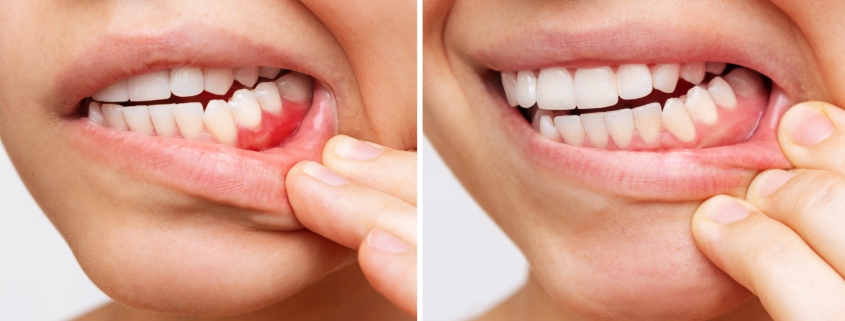Very Red Gums, Causes, Symptoms
Gum health is a critical component of overall oral well-being, with the color and appearance of the gums serving as indicators of potential issues. While pink and firm gums are typically signs of good oral health, gums that appear very red can be a cause for concern. In this article, we explore the potential causes, symptoms, and treatment options for very red gums, shedding light on this common dental issue.
What Causes Very Red Gums?
Gingivitis:
One of the most common causes of very red gums is gingivitis, a mild form of gum disease characterized by inflammation of the gums. Poor oral hygiene, plaque buildup, and bacterial infection can contribute to gingivitis, leading to redness, swelling, and tenderness of the gums.
Periodontitis:
If left untreated, gingivitis can progress to periodontitis, a more severe form of gum disease that affects the supporting structures of the teeth. In addition to redness, periodontitis may cause gum recession, pocket formation, and tooth mobility due to bone loss.
Poor Oral Hygiene:
Inadequate brushing and flossing can result in plaque accumulation along the gumline, leading to irritation, inflammation, and redness of the gums.
Aggressive Brushing or Flossing:
Overzealous brushing or flossing can damage the delicate gum tissues, causing them to become inflamed and appear very red.
Dental Infections:
Infections such as abscesses or oral ulcers can cause localized inflammation and redness of the gums surrounding the affected area.
Hormonal Changes:
Hormonal fluctuations during puberty, pregnancy, or menopause can affect gum health, leading to increased sensitivity, inflammation, and redness.
Systemic Conditions:
Certain systemic conditions, such as diabetes, autoimmune disorders, and vitamin deficiencies, can compromise gum health and contribute to redness and inflammation.
Symptoms of Very Red Gums
Intense redness or deep red coloration of the gums.
Swelling, puffiness, or enlargement of the gum tissues.
Tenderness or sensitivity when brushing, flossing, or eating.
Bleeding gums, especially during brushing or flossing.
Persistent bad breath or a foul taste in the mouth.
Receding gum line or exposed tooth roots.

